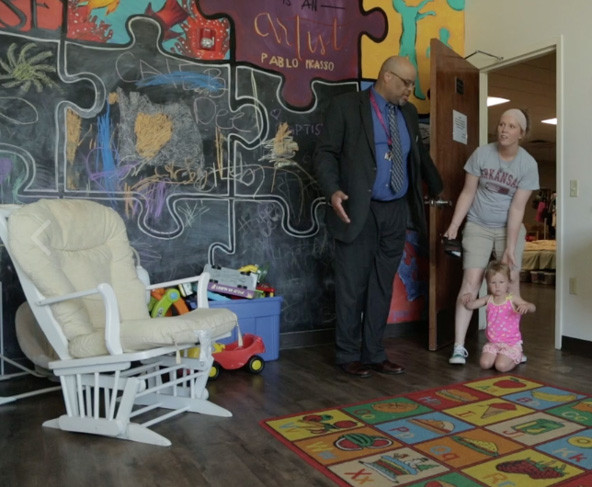For decades, social organizations have struggled to gather meaningful data to prove programs work. Yet a simple and often overlooked measurement solution exists beyond evaluation and monitoring: directly asking constituents for their feedback. The corporate sector relies on customer feedback for insights, testing assumptions, and improving products and services. And though the social sector faces a unique set of barriers to including user voices, new tools and smart tactics can help mission-driven organizations listen and innovate as well.
Two New Tools: Lean Data and Listen for Good (L4G)
Lean Data, developed by Acumen, provides guidance on collecting better customer data in a publicly available guide and through an online course. Over the last year, Omidyar Network has worked with Lean Data to collect feedback on more than 40 companies in its portfolio. Lean Data uses simple 10- to 15-question surveys to gauge the social benefit that companies bring to the people they serve. These include common business metrics such as the Net Promoter Score, which asks: “How likely is it that you would recommend [our company/product/service] to a friend or colleague?"
 Based on client feedback, homeless services organization Our House made changes to make their intake process more welcoming.
Based on client feedback, homeless services organization Our House made changes to make their intake process more welcoming.

Omidyar Network and its investees have used customer feedback from survey data to better serve constituents. For example, in response to Lean Data survey findings, one nonprofit investee working on government budget transparency added new resources to its website and launched a program to better reach those who could benefit most. The new tools and outreach increased the overall use of their budget transparency and accountability portal. In another case, after an existing investee received negative feedback on the user experience of its tech platform, Omidyar Network helped build tech capacity for the group to implement a more effective system. “Lean Data has given us insight into our portfolio companies’ customers and their perceptions of how much impact these services deliver, which has enabled us to improve our support to companies and their missions,” as Amy Klement, partner and global education lead at Omidyar Network notes.
L4G, a program and survey tool from Fund for Shared Insight and SurveyMonkey, helps more than 200 nonprofit organizations collect, analyze, and respond to feedback from their participants. It uses a semi-standard, five-question survey that includes the Net Promoter Score. At this time, only organizations funded by Shared Insight can participate in L4G, but a more public and accessible version of the program is expected to be available within a couple years.
Some survey feedback results in sweeping changes to improve the beneficiary experience: At ECHOS, a health, social, and educational resource organization in Houston, staff reworked the entire participant intake process based on responses expressing frustration with long waits and unfriendly service. Other feedback leads to quick fixes: A food bank in Akron and Canton, Ohio, installed an awning outside one of its distribution sites after clients noted it was often unpleasant to stand outside in bad weather while waiting in line to pick up their food.
When social impact measurement systems, such as randomized controlled trials or pre-post outcome surveys, are not available or feasible, organizations can repeat feedback surveys at intervals to measure the perceived changes in their customers’ experiences. “Using Listen for Good to gather feedback from the 75 youth we work with has allowed us to survey our students and measure the results of our program in a cost-effective way,” says Aaron Neal, elementary curriculum director at HYPOTHEkids, a New York City K-12 STEAM (Science, Technology, Engineering, Art, Math) education organization that had not previously evaluated the program.
While customer feedback isn’t a substitute for good monitoring and evaluation systems, it is an important and valuable complement: Almost two-thirds of L4G nonprofit organizations reported making changes in at least one area, including operations, programs, and staff-client interactions, as a result of listening.
Five Feedback Tactics
So, how can your organization get the most out of customer feedback? Follow these recommendations:
-
Identify your customer. It is important to be clear about which of your various customers you want to survey so you can target your questions and learning goals. For nonprofits, the customer may be donors, staff, board members, volunteers, or the program clients. For impact investors, the customer may be staff, entrepreneurs, or customers of the companies. With L4G, the target customer is always the program clients.
-
Start internally. Be a role model by collecting internal feedback for your organization before collecting it from clients. Omidyar Network realized it needed to collect feedback from its portfolio companies since it was going to ask the companies to collect feedback from customers. The Wright Center, a health services provider in Scranton, Pennsylvania, decided it should first ask staff members for feedback on their experiences working for the organization before asking those same staff members to collect feedback from patients.
-
Provide resources for feedback collection. While collecting customer feedback is less expensive than conducting rigorous impact evaluations, funders and investors should recognize costs and build the capacity of organizations to implement high-quality feedback systems. For example, Shared Insight makes capacity-building grants alongside nominating co-funders to help nonprofits pay for the staff time and technology required to implement L4G.
-
Develop plans to apply feedback. Customer feedback provides a window into the way entrepreneurs and leadership teams respond to data and learn from failure. To make the most of feedback, funders, investors, and investees must develop plans for how to use it and nurture the skills of gathering and applying feedback to improve organizational practice. For example, at Our House in Little Rock, Arkansas, the feedback is regularly reviewed by a community council that is made up of individuals who benefit from the nonprofit’s services and programs. They interpret the feedback and make suggestions to staff about how and what to improve.
-
Make feedback part of your ongoing business analysis. Collecting customer feedback in the social sector is a relatively new practice but one with great potential for generating insights and illuminating areas for improvement. Investors and organizations should continually collect and embed feedback in their performance management systems to see whether and how customer experience improves over time.
Most importantly, social sector organizations should resolve to consider customer voice —the feedback of their clients—as an integral part of their analyses, evaluations, and decision-making. It can be a powerful and cost-effective element of measurement, growth, and mission-driven improvement—and it all starts with the simple act of listening.
This article is part of a series that was produced for Stanford Social Innovation Review by Milway Media with the support of the William and Flora Hewlett Foundation.
Support SSIR’s coverage of cross-sector solutions to global challenges.
Help us further the reach of innovative ideas. Donate today.
Read more stories by Jessica Kiessel & Melinda Tuan.

